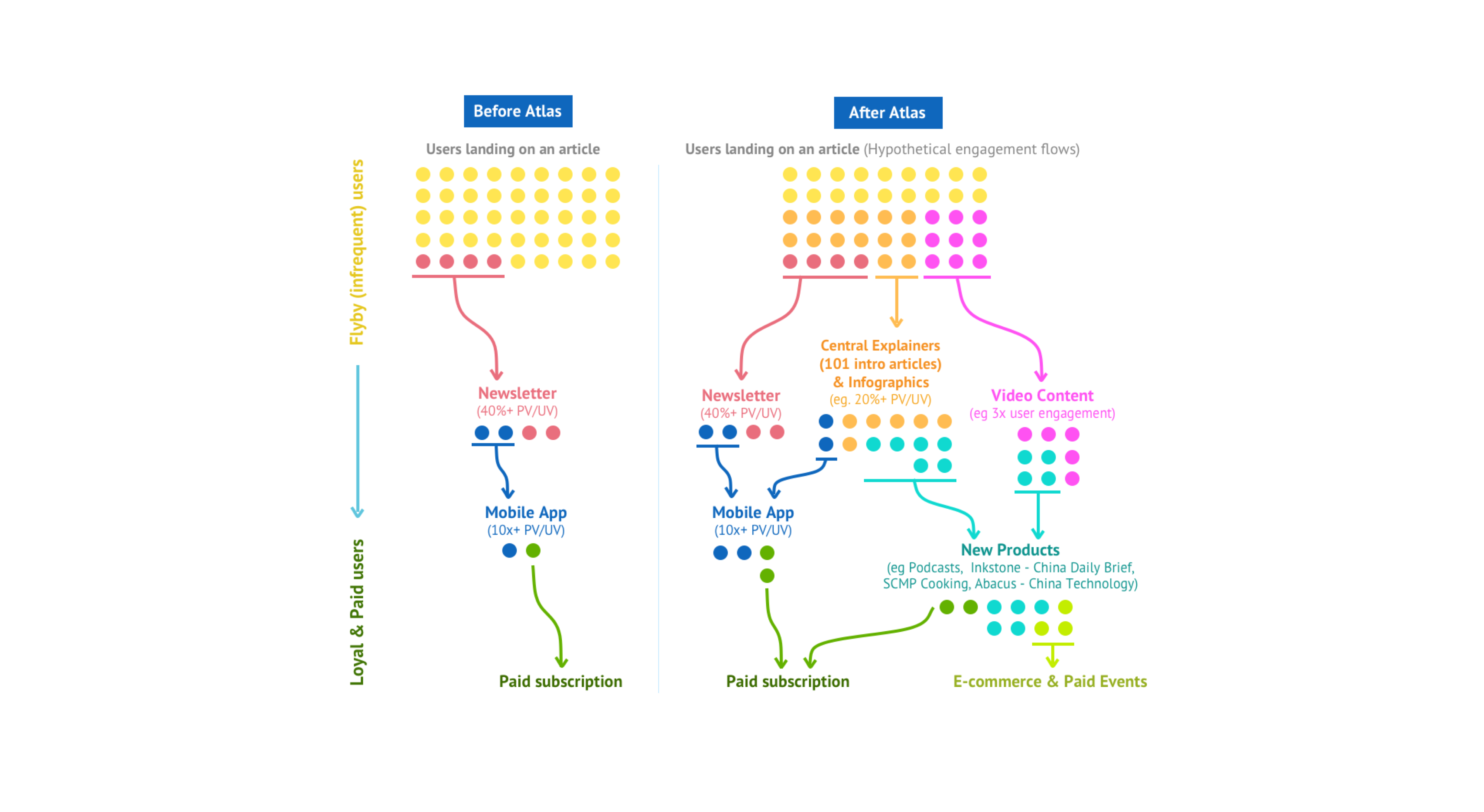
The Problem
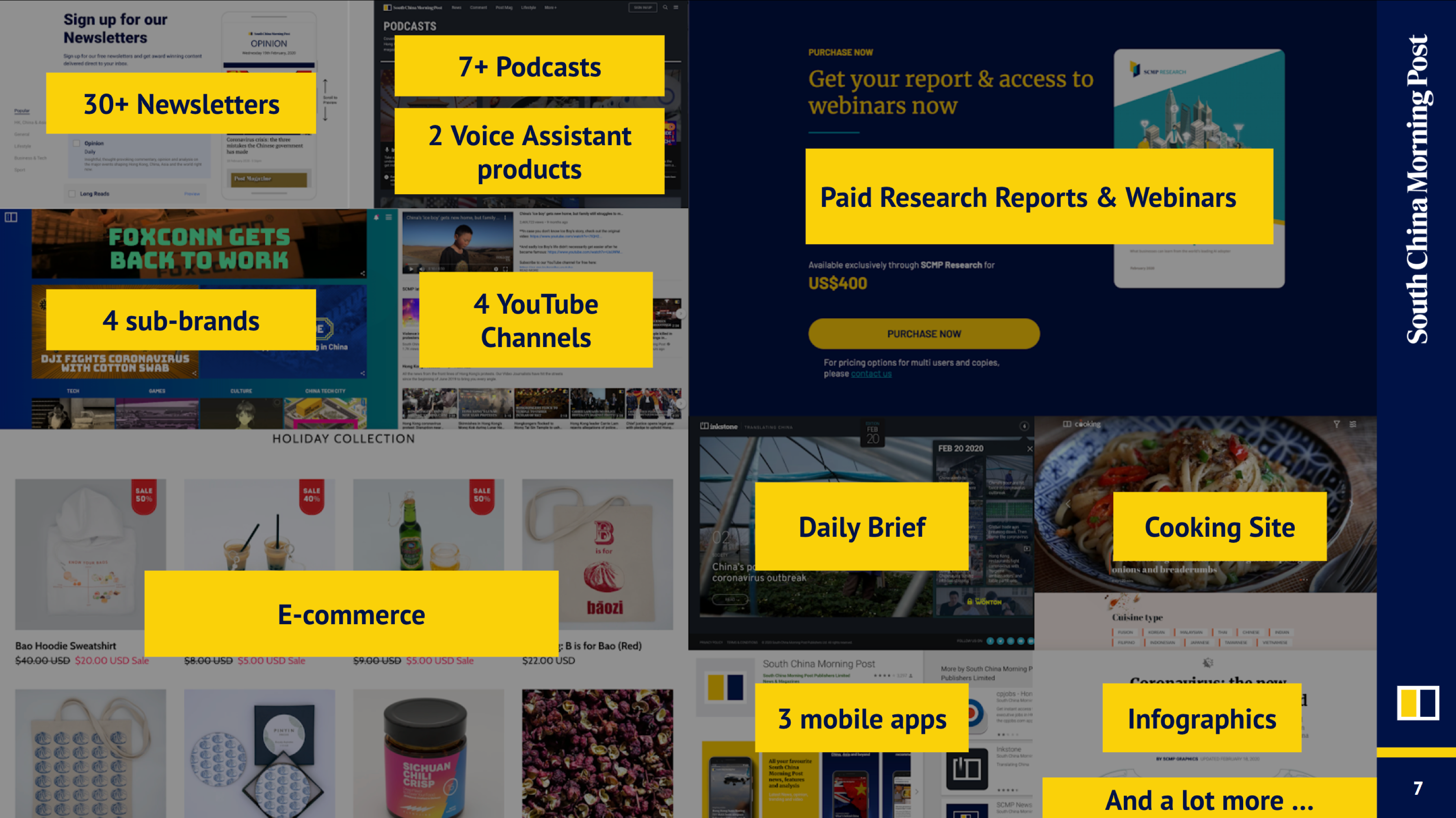
SCMP has a wide variety of different engagement-related products & triggers, ranging from newsletters, mobile apps, and chatbots to podcasts, smart speaker apps, and online communities.
However, we do not know which products or CTA's to recommend to our different types of users for optimal conversion and engagement. In other words, we are making broad-stroke guesses on what each user wants, which leaves a lot of room to improve and is a big problem.
What is Project Atlas?
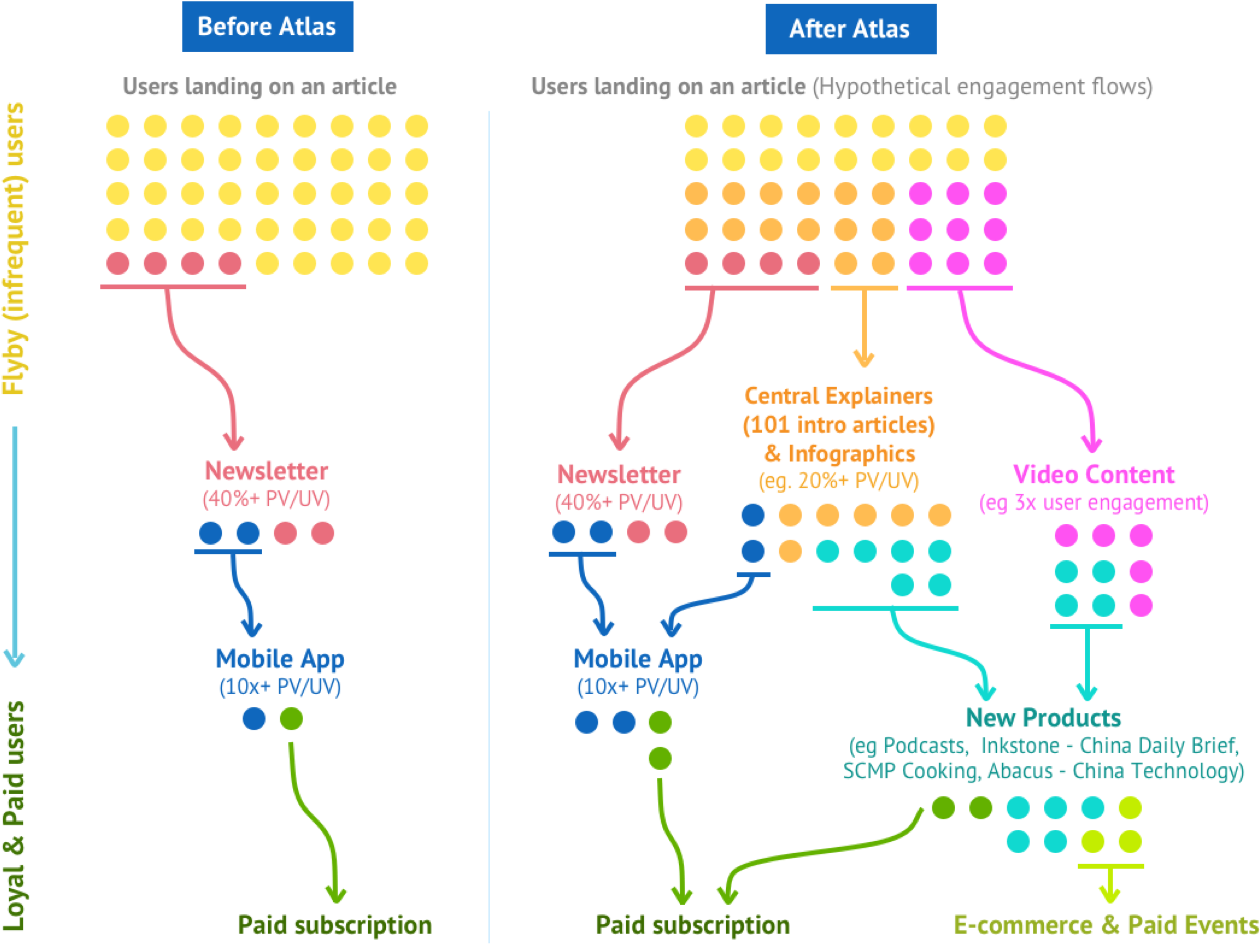
Project Atlas is a system that dynamically creates user personas and journeys based on demographic, psychographic, and behavioral data. Using machine learning, it classifies users into stereotype-based clusters, which can then be fed into models and recommender engines to better personalize user experiences, and thus, increase engagement and monetization.
When a user consumes our content or interacts with our products through various formats (text, graphics, audio, video), mediums (web, mobile), and contexts (in-car, on-the-commute), we can identify their respective persona and insert them into an optimal user journey to determine the next call-to-action (CTA), whether it be another piece of content, an ad, a marketing campaign widget, or a download/subscribe conversion.
This system serves as a next step from general data collection to better understand our users' motivations so we may improve user engagement funnels and optimize monetization (e.g. ads, dynamic subscription paywalls).
Examples of widgets to optimize:
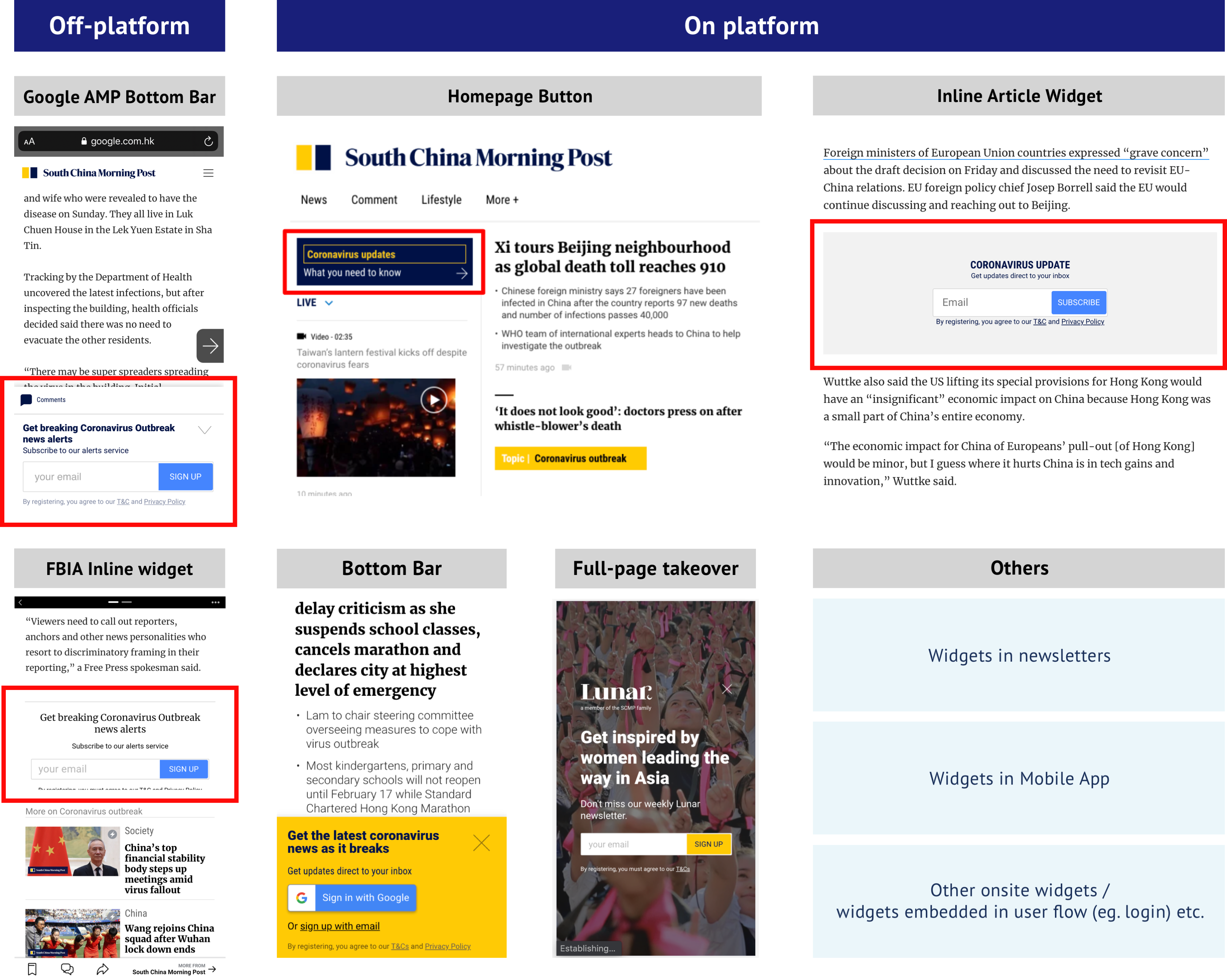
Major Components of Atlas
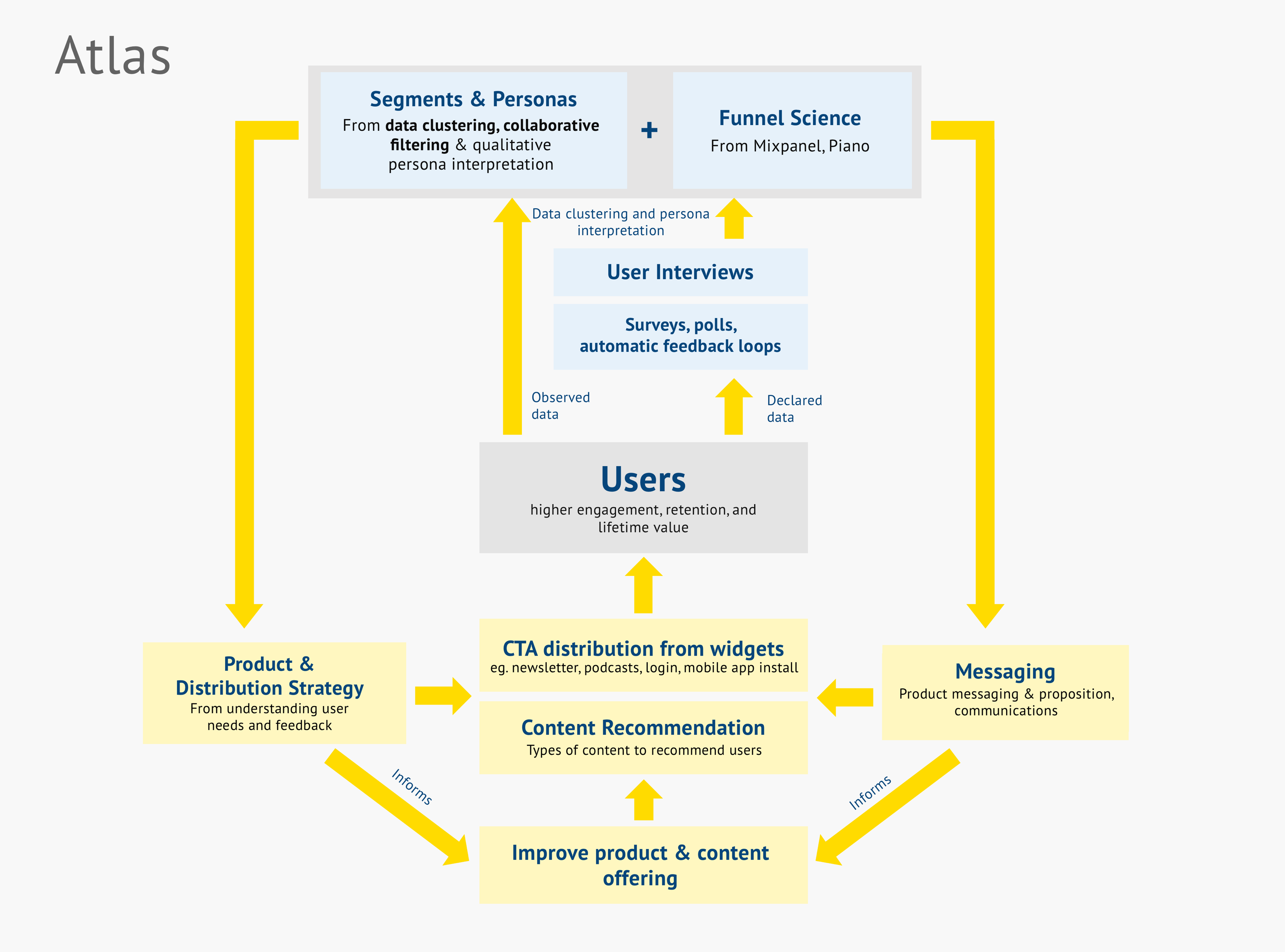
There are several components to Atlas :
1. Audience Insights — from observed data and declared data such as surveys and user interviews to help us understand user needs, motivations, and preferences
2. Data clustering / collaborative filtering — to help us cluster users into personas and segments
3. CTAs & widgets — distribution of CTA widgets across PWA, mobile, off-site platforms, and newsletters to move users down the engagement funnel
4. A/B tests and experiments — to prove our hypothesis of our personas & segments, make changes, and further optimize the distribution plan. CTR breakdown of widgets from A/B tests can help us further identify new segments for execution.
5. Automatic feedback loops — to help us iterate and expand our user segments
6. Funnel science — to draw insights from user behaviors and evaluate the impact
7. Messaging — product messaging, proposition, communications
8. Product & Distribution Strategy — iterate on product strategy to create products that users want and distribute them to the right people.
User Stories
Before Atlas
Hypothetical scenario: there are two users reading a US-China trade war article on SCMP, Amy and Jennifer. They can only be identified by limited information (device, GEO, platform) and both of them are being promoted the same CTA (sign up for the US-China Trade War Newsletter).
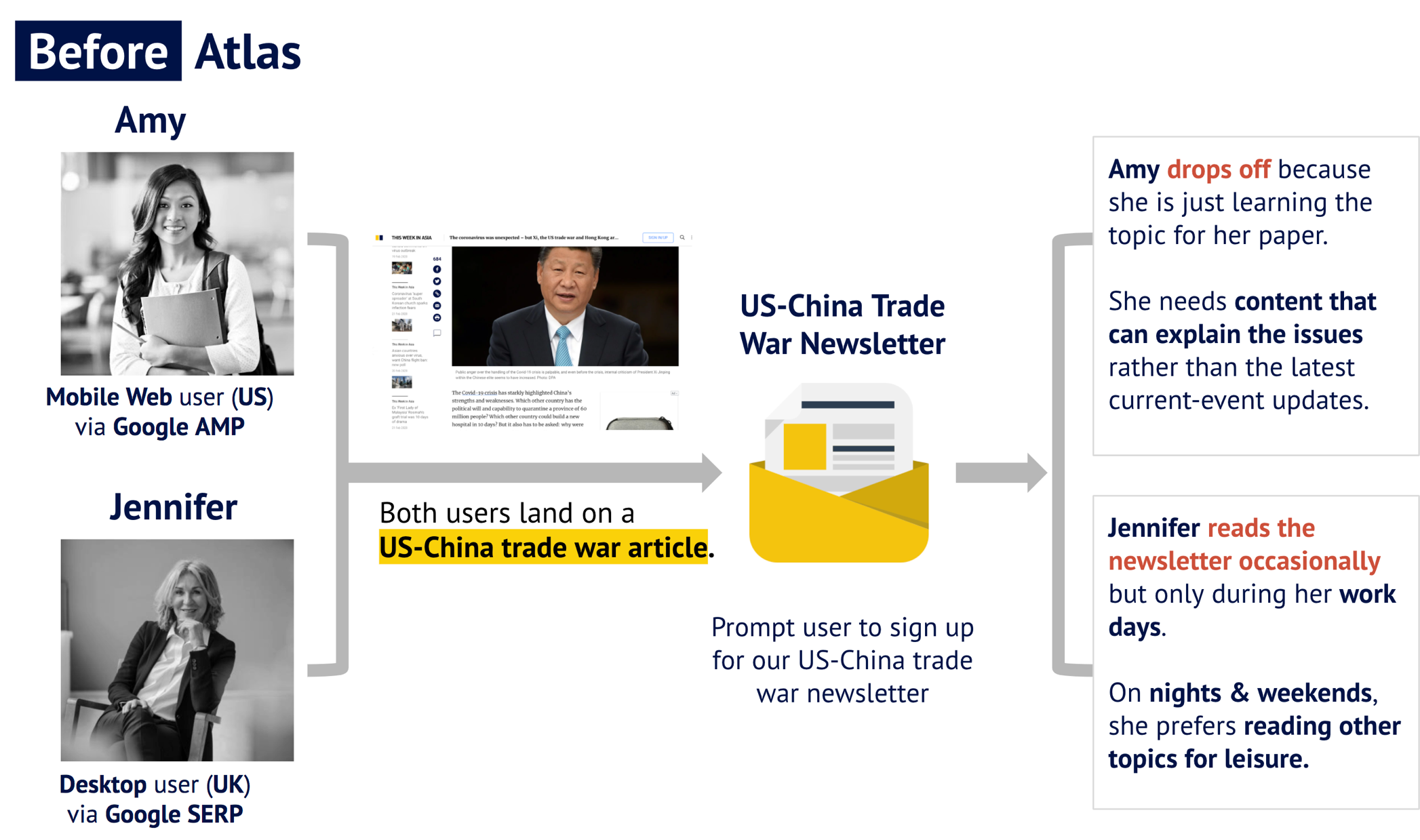
After Atlas
With Atlas, we can predict Amy and Jennifer's personas based on their behavior and interactions with our site (usage, poll responses). Amy is a student in the US interested in US-China Trade War. Jennifer is a working mom doing investment research in the UK. They are then prompted to different user journeys:
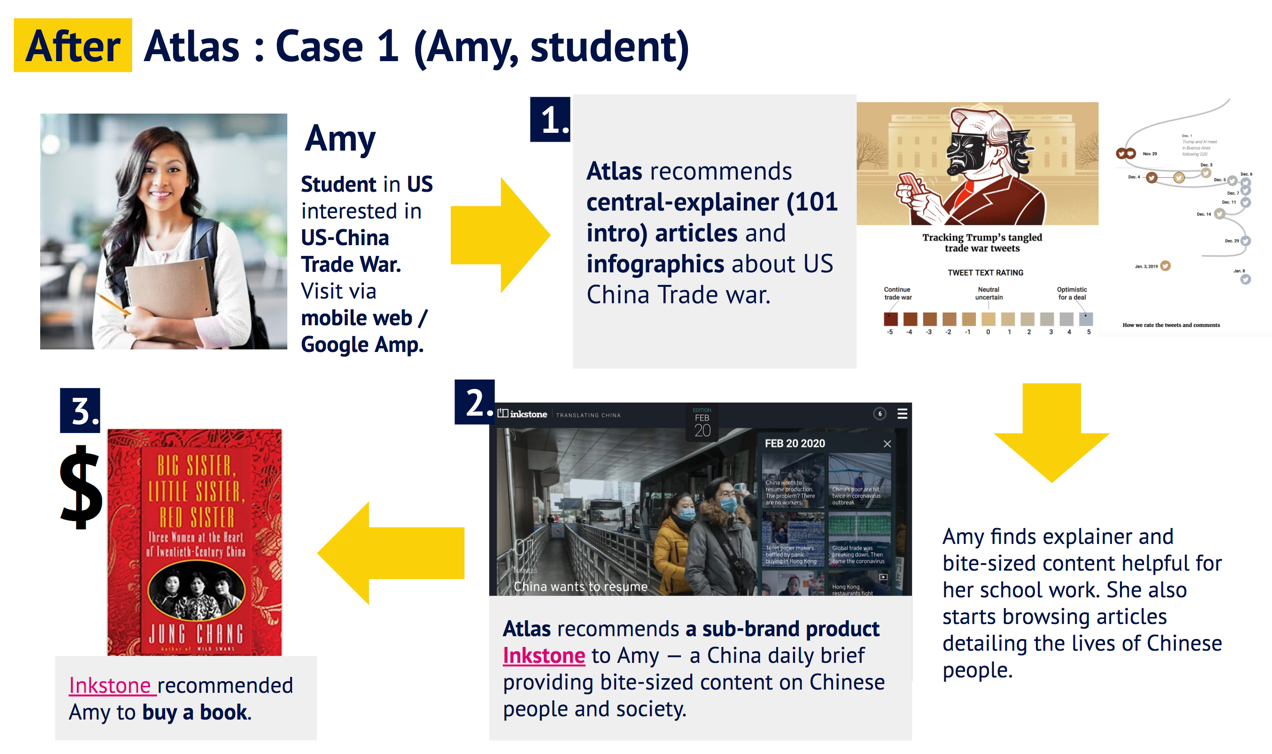
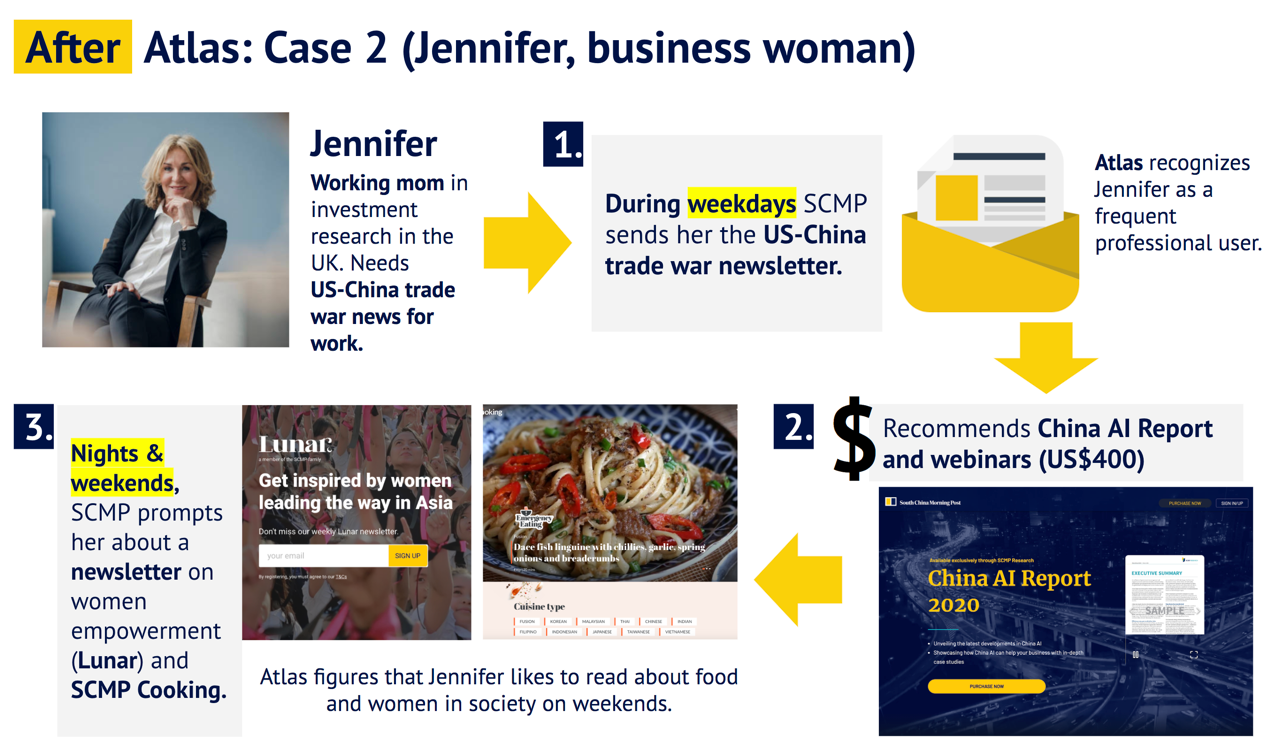
Criterias for setting up user segments
1. Scalable: from broad --> granular segments: Broad user segments justifies the limited resources for customization due to its greater reach (eg. How do we justify 2 man-weeks for 0.2% of an audience?). However, the segments should be scaleable to split into more granular segments so that we can create effective targeting for specific use cases (eg. targeting users for reader subscription, US$500 research reports without spamming the general audience).
2. Covers behavioral, demographic, psychological needs & identity: in order to do so, we need to combine information from multiple aspects — user interviews, surveys, user behavior, user polls, third-party data.
3. Meets the needs of multiple stakeholders: the segments should able to solve problems from multiple stakeholders:
- Editorial : How should we write our content to fit the audience? (Topics, depth, perspectives, style, format, approach to the issue)
- Marketing: Who should we target our ads? How should we approach communications & messaging? (content, format, timing, platform)
- Product: How can we run experiments & campaigns to target our audiences more effectively? What should their user experience look like?
- Data: How can we build a simple, maintainable model of our user segments that can scale in the future?
Designing the user segments
For our user segments, we want to be able to isolate specific characteristics and scale them for effective targeting. Therefore, we took reference of the MBTI (Myers- Briggs Test). MBTI is a common personality test that categories people into 16 personalities:
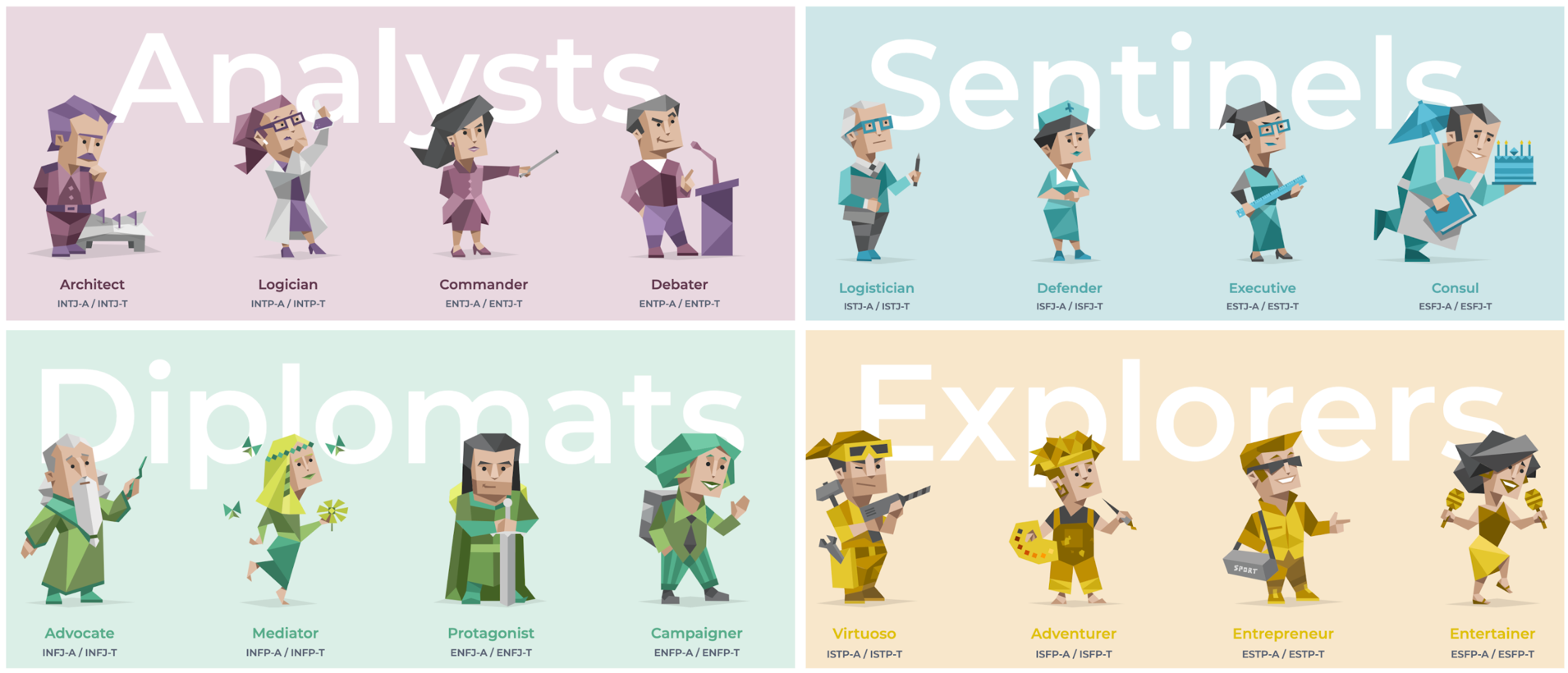
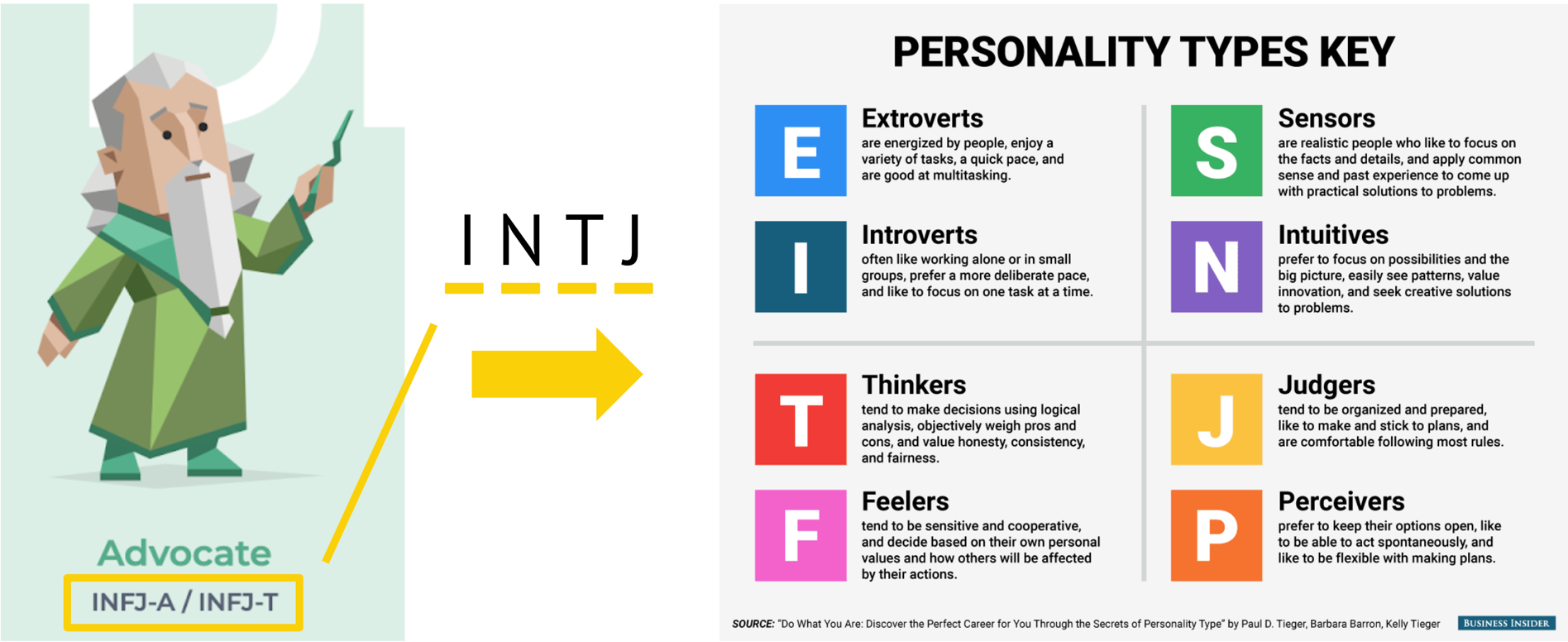
In the MBTI classification, 16 personality types are identified by 4 major keys represented by a letter. For example, the first key is related to the person's position in the introversion-extroversion scale. The person would get letter “I ” if he/she is an introvert, and a a if he is an extrovert.
Designing SCMP user segments
Taking reference from the above classification, we hypothesized breaking down our user segments into the following components:

The components can scale to more complicated segments in the future:
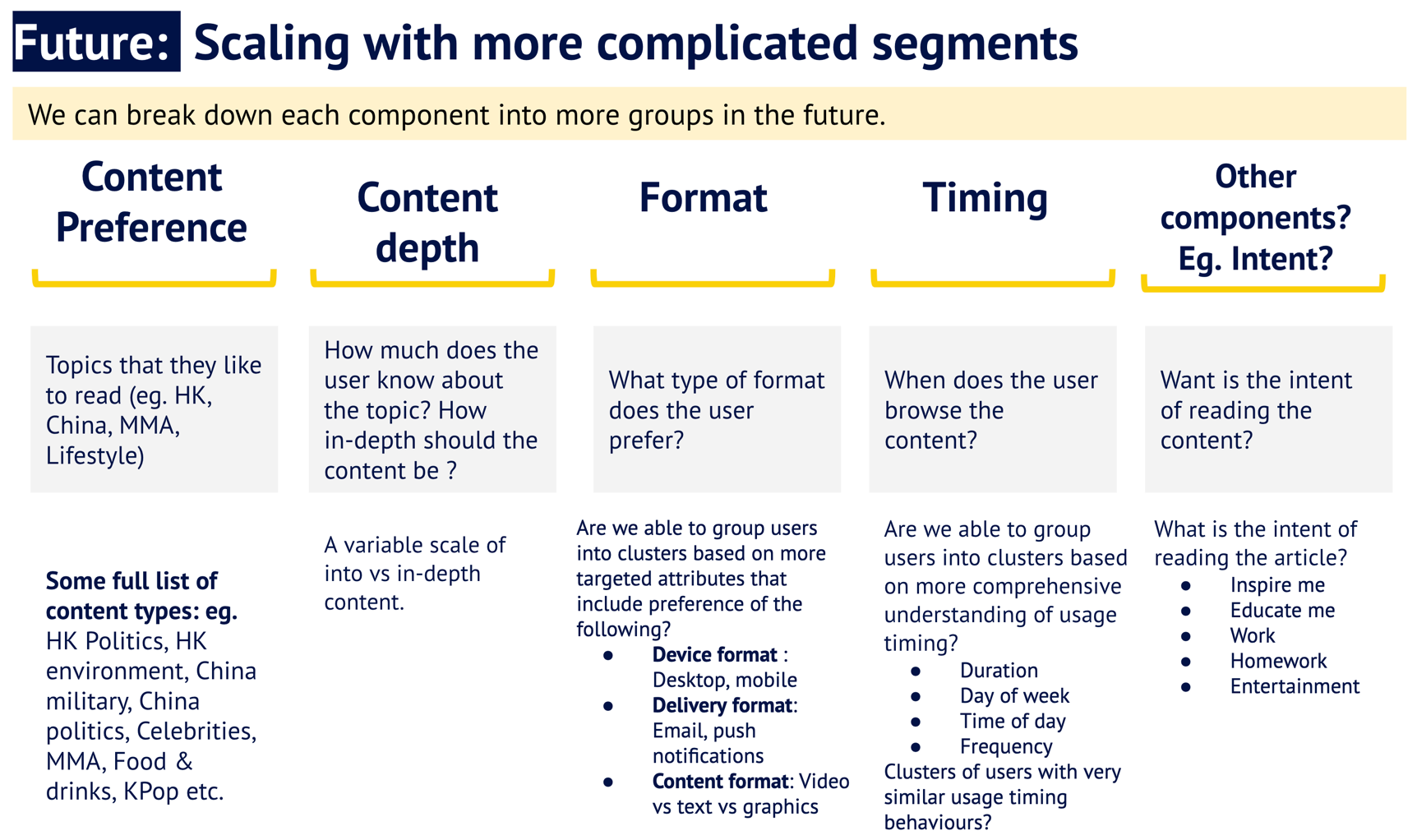
One thing to note is that a user may interact with SCMP differently based on the content they are reading. Taking the above user journey example of Jennifer(working mom doing investment research) and Amy (US student), a user can belong to multiple segments based on the content they are reading:
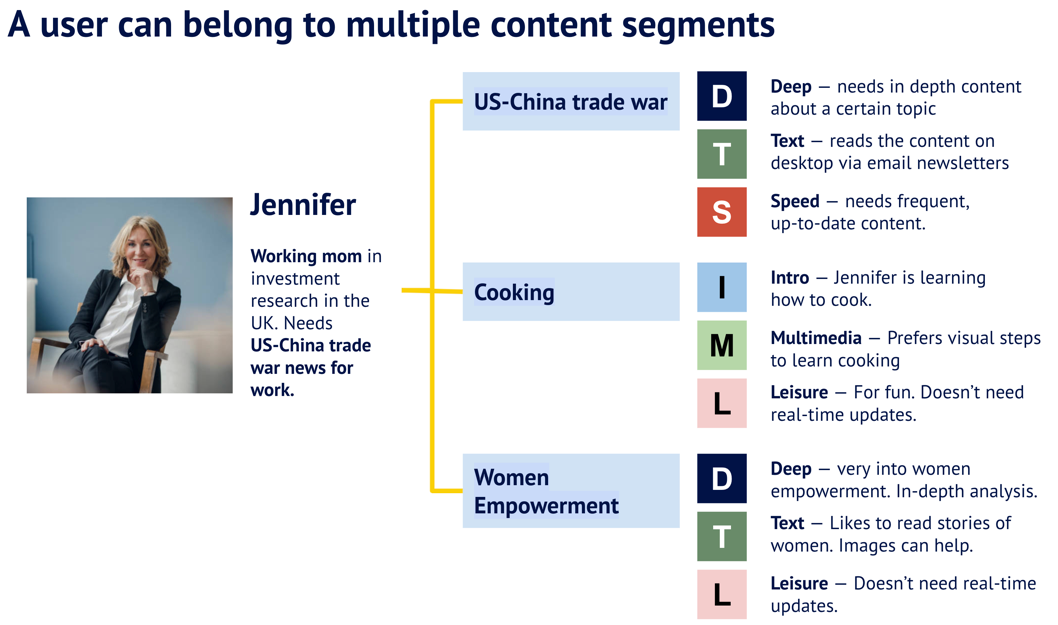
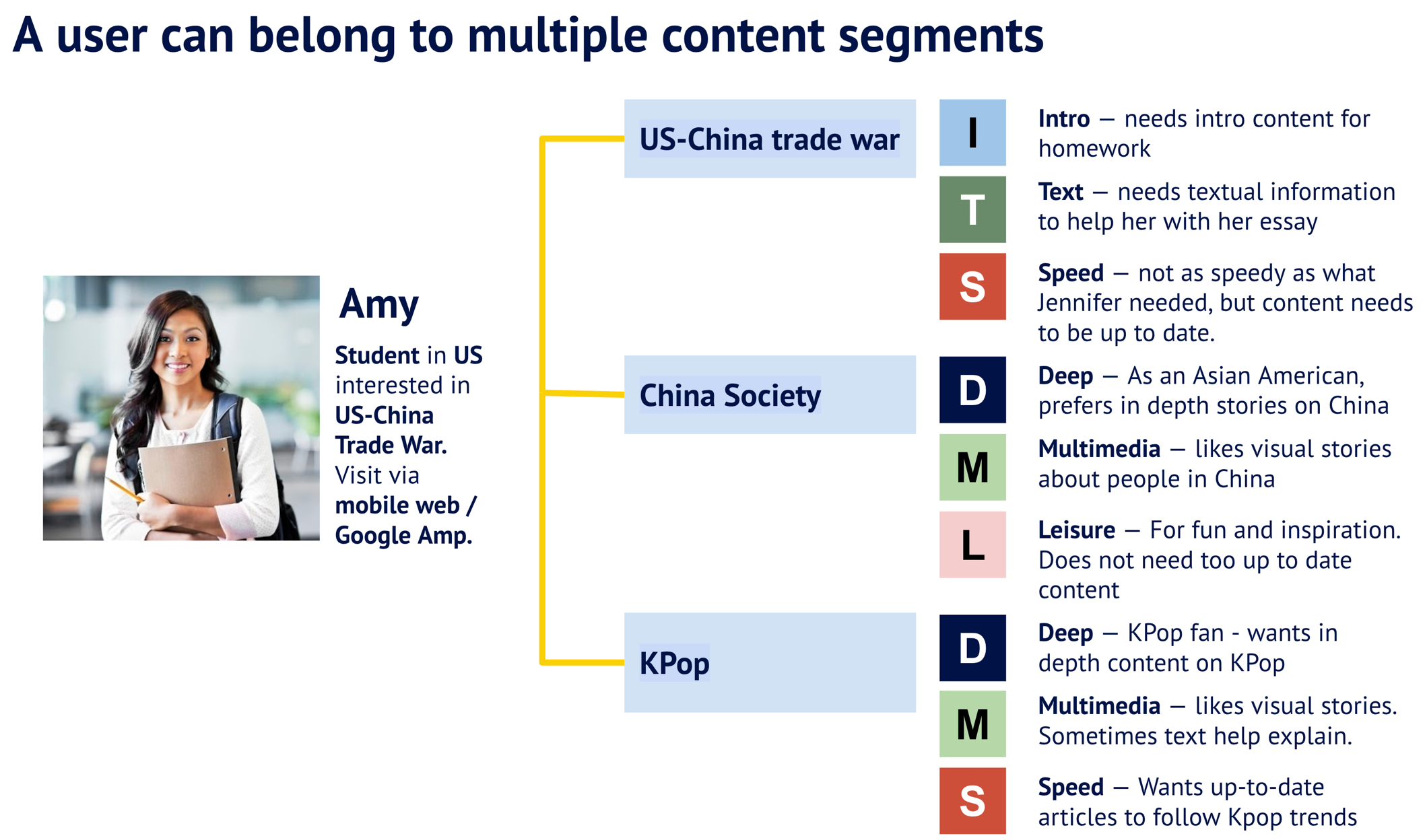
With this sample classification, we can easily isolate content segments for specific targeting. This is an example of a hypothetical, simplistic, brief version of a user persona:
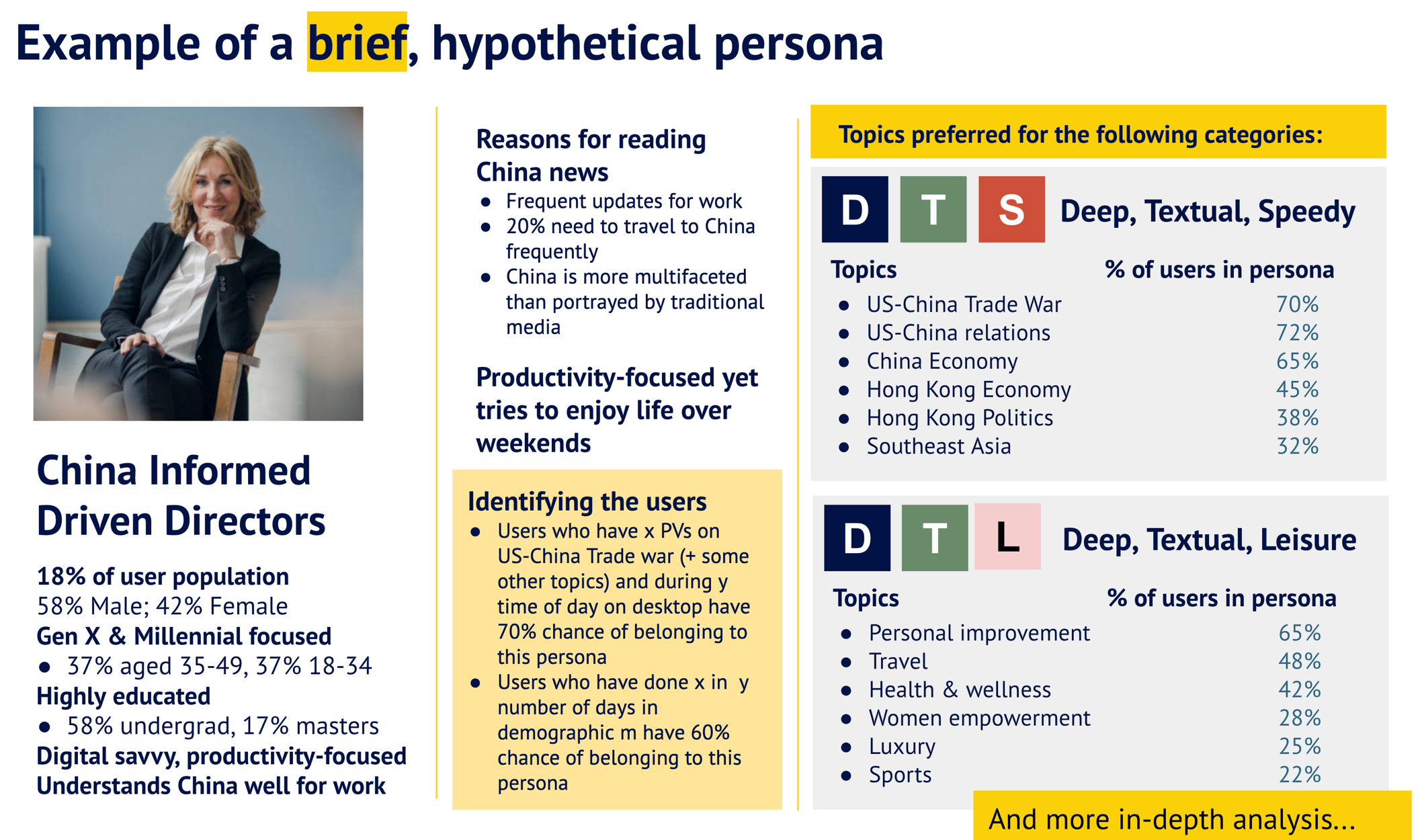
Data collection & generation of user segments
We collected data and findings from user interviews, surveys, usage behavior, and polls to generate our user segments. Here are some of the information that we use:
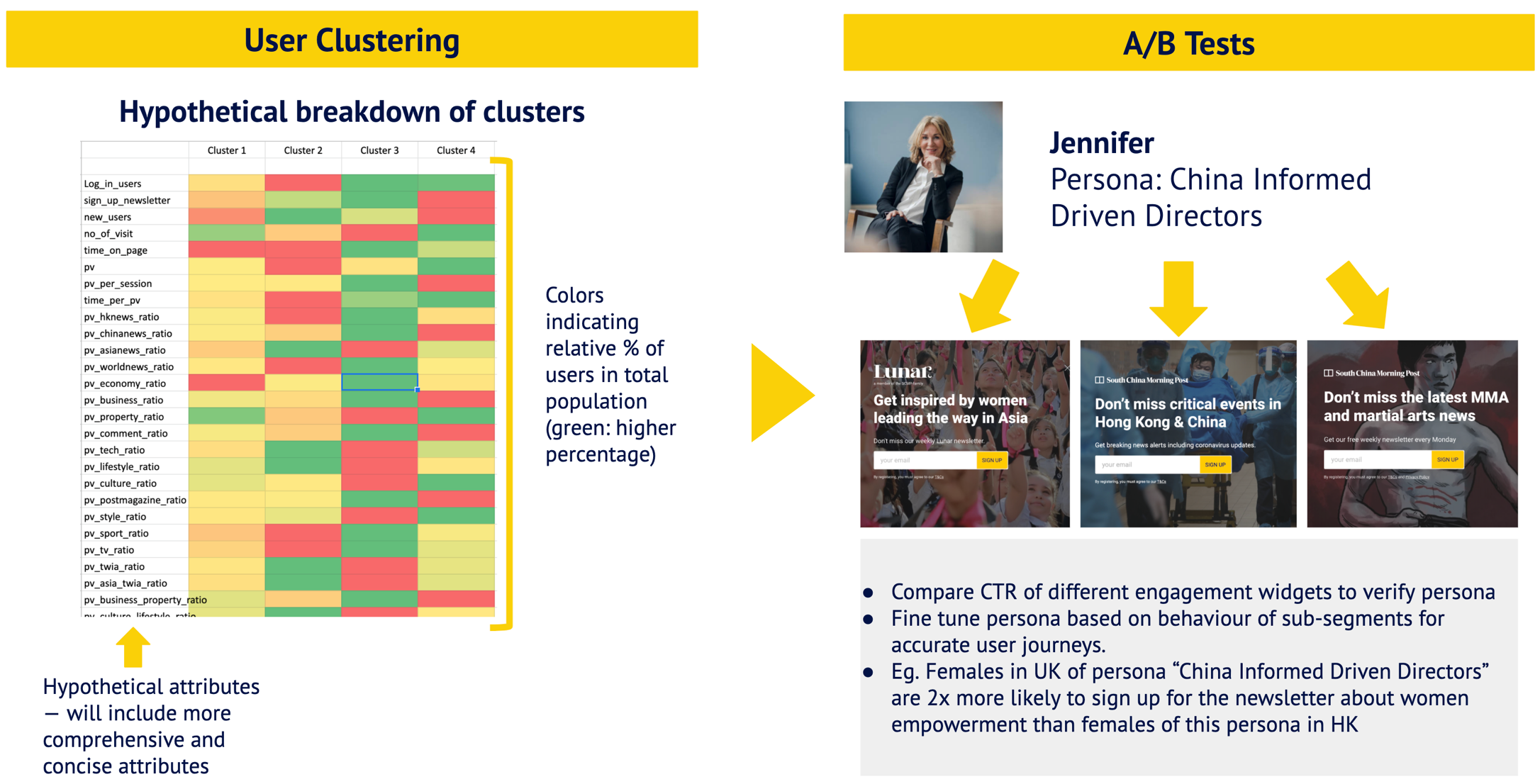
In the execution phase of defining and testing user segments, we ran two approaches in parallel: top-down approach and bottom-up approach.
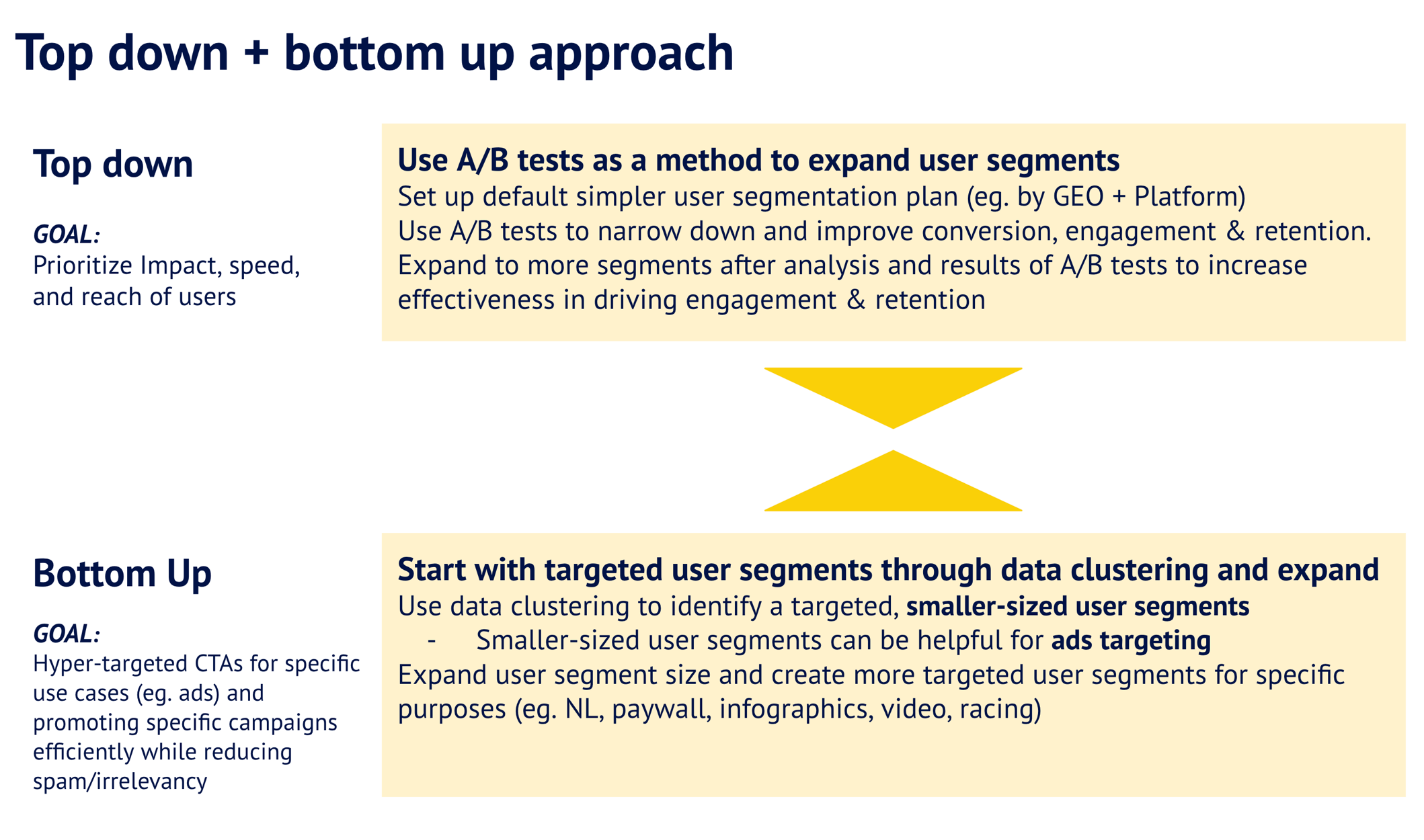
Impact
We're still in the persona generation and testing phase. However, from preliminary experiments, we have seen 30%-70% improvements in user engagement 2 weeks after specific users are given CTAs (eg. NLs) targeted to their user segment instead of the generic CTAs given to most audiences.

